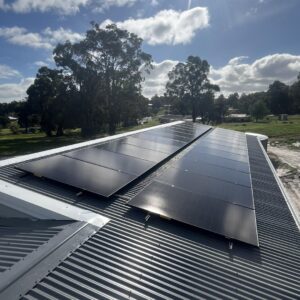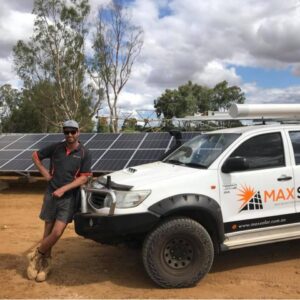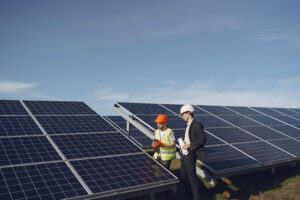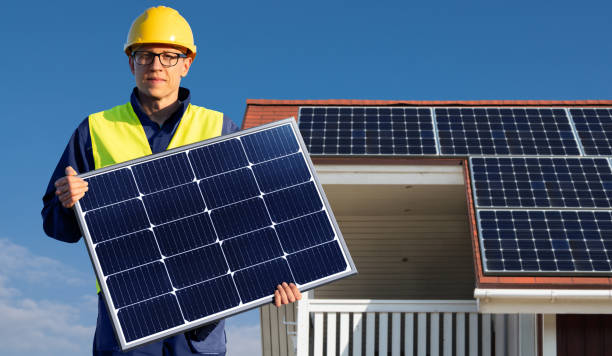In the vast, sun-drenched landscapes of regional Australia, the energy conversation is shifting. More and more Australians are exploring why invest in off-grid solutions — not just as a backup, but as a complete, self-sufficient alternative to traditional grid power.
Whether you’re a rural property owner, a sustainability-conscious homeowner, or a savvy investor looking for long-term savings, off-grid power systems offer freedom, reliability, and financial benefits. In this blog, we break down the cost comparison grid vs off-grid, explore rebate options, and answer key questions about making the move.
What Are Off‑Grid Solutions?
Off-grid solutions refer to stand-alone power systems that operate independently of the main electricity grid. These systems typically include:
• Battery storage
• Inverters and controllers
• Optional backup generatorsOnce set up, these components work together to generate, store, and supply electricity—completely off the grid.
Why Invest in Off‑Grid Solutions? The Core Benefits
The reasons to go off-grid are both practical and philosophical. Here’s why Australians across the country are choosing to make the switch:
1. Energy Independence: With an off-grid system, you’re no longer subject to utility price hikes, grid outages, or infrastructure delays. You control your power production and consumption, ideal for remote or rural properties where grid access is limited or expensive.
2. Long-Term Cost Savings: While initial installation can be higher than a grid-connected system, the long-term returns are substantial. You avoid: Daily supply charges, Peak usage fees, Grid infrastructure costs. We’ll dive deeper into the cost comparison grid vs off-grid below.
3. Sustainability: Australia has some of the world’s highest solar irradiance levels. Harnessing this energy through a clean, self-sustaining system helps reduce your carbon footprint significantly—without sacrificing performance.
4. Resilience & Reliability: Off-grid systems are designed with redundancy in mind. With battery backups and optional generators, you’re protected against blackouts, storms, or emergencies.
Cost Comparison: Grid vs Off-Grid in Australia
Initial Investment
| System Type | Estimated Cost (Residential) |
|---|---|
| Grid-connected | $6,000 – $12,000 |
| Off-grid system | $18,000 – $45,000+ |
Note: Costs vary based on energy usage, storage needs, and site specifics.
Ongoing Costs
| Category | Grid-Connected | Off-Grid |
|---|---|---|
| Daily Supply Charges | $1–$2/day | $0 |
| Usage Charges | $0.25–$0.45/kWh | $0 |
| Maintenance | Low–Moderate | Moderate |
| Battery Replacement (10–12 years) | N/A | Yes (budget $8k–$15k) |
Break-Even Point
Most off-grid systems break even after 8–12 years, especially as electricity prices continue to rise. After that, you’re producing free energy—with only occasional battery or system updates.
Rebates and Incentives for Off-Grid Power in Australia
1. Small-scale Technology Certificates (STCs): Reduce upfront costs of solar PV systems—even off-grid.
✅ Ideal Candidates
- • Rural or regional property owners
- • Homesteads or farms
- • Eco-conscious homeowners
- • Holiday homes in remote areas
- • Tiny homes or mobile dwellings
❌ May Not Be Ideal If
- • You’re in a metro area with affordable, reliable grid access
- • Your property gets limited sunlight
- • Your energy usage is very high without space for large batteries
A custom consultation with MaxSolar can help you decide if off-grid is right for your needs.
Key Components of a Reliable Off‑Grid Power System
- 1. Accurate Energy Audit: Understand your usage across seasons and time of day.
- 2. High-Efficiency Solar Panels: Choose Tier 1 panels suited for Australian conditions.
- 3. Battery Storage: Must cover night usage, cloudy days, and emergencies.
- 4. Inverter & Charge Controller: Essential for efficiency and equipment longevity.
- 5. Monitoring System: Use apps to track performance in real time.
Installation & Maintenance: What to Expect
With a reliable provider like MaxSolar, you can expect:
Installation Timeline
- • Site inspection: 1–2 weeks
- • System design and approval: 1–2 weeks
- • Installation and testing: 1–3 days
Maintenance Tips
- • Clean panels every 6–12 months
- • Check battery health annually
- • Replace inverters every 10–15 years (varies by model)
Real-World Example: Going Off-Grid in Rural Australia
A MaxSolar client in regional Victoria faced a $45,000 grid connection fee. Instead, they installed:
- • 10kW solar system
- • 28kWh battery storage
- • Backup diesel generator
They now enjoy full energy independence—with savings projected to exceed $100,000 over the system’s lifetime.
Conclusion: Make the Smart Switch to Off‑Grid Living
FAQs: Off‑Grid Power in Australia
1. Why invest in off-grid solutions instead of a grid-tied system?
Off-grid solutions provide full energy independence, ideal for areas with unreliable or expensive grid access. You also gain long-term cost control and sustainability benefits.
2. What is the cost comparison grid vs off-grid in Australia?
Off-grid systems have a higher upfront cost but eliminate ongoing electricity bills. Over 10–20 years, they can be more cost-effective, especially in remote regions.
3. Are there any rebate options available for off-grid systems?
Yes, STCs and certain state-based rebates can reduce upfront installation costs. Business owners may also access tax incentives. Check eligibility with MaxSolar.
4. How long does it take for an off-grid system to pay for itself?
Most systems break even within 8–12 years, depending on your energy usage, setup cost, and avoided grid connection fees.








